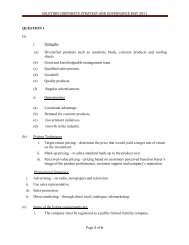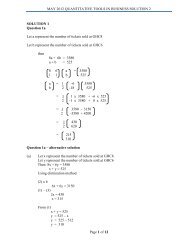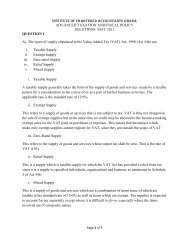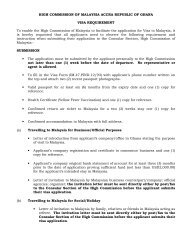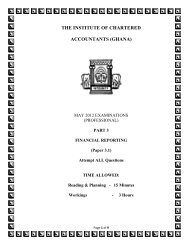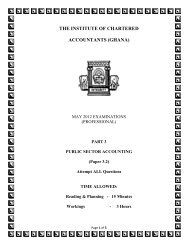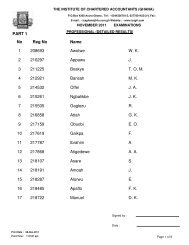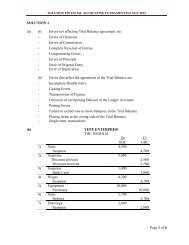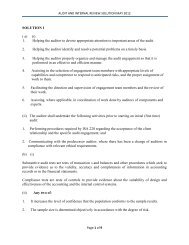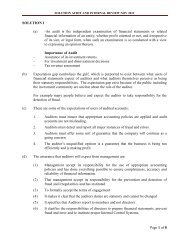CORPORATE STRATEGY AND GOVERNANCE.pdf
CORPORATE STRATEGY AND GOVERNANCE.pdf
CORPORATE STRATEGY AND GOVERNANCE.pdf
You also want an ePaper? Increase the reach of your titles
YUMPU automatically turns print PDFs into web optimized ePapers that Google loves.
<strong>CORPORATE</strong> <strong>STRATEGY</strong> <strong>AND</strong> <strong>GOVERNANCE</strong> NOV 2012into trouble. Such a company will not be in a position to pay back its creditors in theshort term.(ii)(a)(b)(c)Determinants of Working CapitalA determinant of working capital is the general nature and size of thecompany. For example manufacturing companies invest a lot in its fixed assetsas well as in current assets. Trading companies have to keep a lot of cash dueto the nature of their business. Retail shops must carry large stocks thereforethey have huge working capital.Another determinant of working capital is the growth objective of theorganisation. Growth oriented companies require more working capital thanthose that are static. As companies expands or grow their working capitalrequirements also increases. When a company is growing there is the need tobuy more inputs as raw materials, recruit more staff, among other purchases.During such period the company would witness an increase in both its assetsand liabilities activities.The availability of credit from suppliers has a bearing on the level of workingcapital that an organisation can keep. The credit terms given to businessdepends to an extent on the norms of the industry in which it is operating.Credit services from the banks also influence working capital. A company willkeep less working capital if it has access to liberal credit terms.(d) Another determinant of working capital is the auditing of supply. Anorganisation uses inventories as raw materials, spare parts to carry out itsproduction. The conditions of supply for these inventories affect the status ofits working capital. If the supply is prompt and adequate the organisation canmanage with small inventory. Also when the raw material is available onseasonal bases more funds are needed during the peak season.(e)The trade cycle also influences the level of working capital. Trade cycles refersto the periodic changes or turns in business opportunities. The cycle can havefour phases. These periods are boom, depression, recession and recovery.During a boom period, the organisation has to carry out more business animplication is more production requiring more working capital. Recessionperiod comes with less business activities hence less working capital.(f) Techniques to Support Change(1) A technique to support the change process is the creation of financial reserveswhich will be used to support employees that will be adversely affected by thechange. The change process may come with reduction in workforce due to theuse of other technologies that use less labour. The organisation has to paythese employees off so that the change processes do not face resistance.Page 8 of 10



